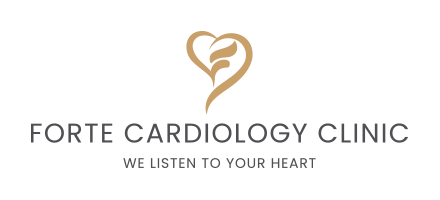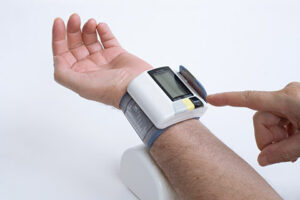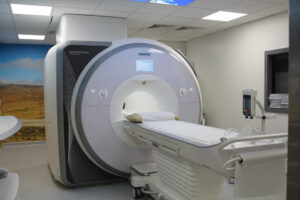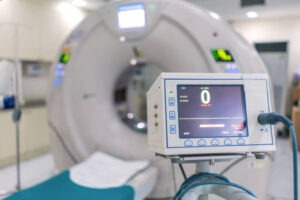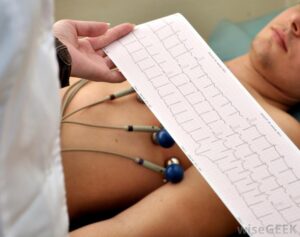Cardiac Magnetic Resonance is a diagnostic technique that employs the power of magnetic fields and radio waves to create detailed images of the heart’s structure and function. Learn about how this sophisticated method goes beyond conventional imaging to offer a comprehensive understanding of cardiac health.
What is a Cardiac MRI?
Cardiac Magnetic Resonance Imaging (MRI) is a non-invasive and powerful diagnostic procedure meticulously designed to delve into the intricate details of the heart’s structure and function. This procedure is instrumental in providing a comprehensive understanding of the cardiac landscape, aiding healthcare professionals in precise diagnoses and treatment planning.
How Cardiac MRI Works
At the heart of this cutting-edge imaging technique lies the utilisation of magnetic fields and radio waves to generate detailed images of the heart. The process involves:
Magnetic Field Interaction – When a patient enters the MRI machine’s magnetic field, the body’s hydrogen atoms align with the magnetic field.
Radio Wave Emission – Radio waves are applied, causing the aligned hydrogen atoms to emit signals.
Signal Detection and Image Creation – Specialized detectors capture these signals, creating highly detailed images that reveal the heart’s structure, function, and blood flow.
Indications for Cardiac MRI
Cardiac MRI proves particularly beneficial in a myriad of scenarios, offering unparalleled insights into various aspects of cardiovascular health:
Assessing Heart Structure – Cardiac MRI excels in providing detailed images of the heart’s chambers, valves, and surrounding structures, aiding in the assessment of congenital or acquired heart conditions.
Functional Evaluation – The procedure offers dynamic images that enable healthcare professionals to assess the heart’s pumping function, identifying any abnormalities that may impact its efficiency.
Blood Flow Dynamics – Cardiac MRI is adept at visualising blood flow patterns within the heart and major blood vessels, aiding in detecting issues such as heart valve disorders or blood vessel abnormalities.
The Cardiac MRI Procedure
Patient Preparation
Before embarking on the journey of Cardiac MRI, individuals are guided through essential pre-procedure steps to ensure a seamless and effective examination. This involves:
Fasting Instructions – Guidance on fasting, typically for a few hours before the procedure, to optimise imaging conditions.
Clothing and Accessories – Instructions regarding appropriate clothing and the removal of metallic accessories, ensuring compatibility with the MRI machine.
Medical History Review – A thorough review of the patient’s medical history to identify any factors that may impact the procedure or use of contrast agents.
Magnetic Resonance Imaging
The core of the Cardiac MRI procedure involves the patient lying within the MRI machine, where magnetic fields and radio waves collaborate to capture detailed heart images. This entails:
Patient Positioning – Placing the patient on the MRI table in a specific position ensures optimal alignment for accurate imaging.
MRI Machine Experience – The patient is gently moved into the MRI machine, a tunnel-like structure. It’s crucial to remain still during imaging to obtain clear and detailed results.
Communication – Communication channels, such as an intercom, ensure continuous contact between the patient and the healthcare team throughout the procedure.
Contrast Enhancement
In some instances, contrast agents may enhance the visualisation of specific heart structures. This involves:
Contrast Injection – Intravenous injection of a contrast agent to highlight blood vessels and specific areas of the heart, providing additional clarity in the images.
Monitoring and Safety Measures – Continuous monitoring of the patient’s vital signs during and after contrast injection, with safety measures in place to address potential reactions.
Interpreting Cardiac MRI Results
Analysing MRI Images
Healthcare professionals embark on a meticulous journey of interpretation as they analyse the detailed images of the heart obtained through Cardiac MRI. This involves:
Structural Assessment – Examining the intricate details of the heart’s structure, including the chambers, valves, and surrounding tissues, to identify any anomalies or irregularities.
Functional Dynamics – Assessing the dynamic aspects of heart function, such as pumping efficiency and wall motion, providing insights into overall cardiac performance.
Blood Flow Visualization – Visualising blood flow patterns within the heart and major blood vessels, aiding in assessing vascular health and detecting potential issues.
Identifying Normal vs. Abnormal Findings
Distinguishing between normal and abnormal findings is a crucial aspect of Cardiac MRI interpretation, involving:
Healthy Heart Structures – Recognising the characteristics of healthy heart structures, which exhibit symmetrical and coordinated movements and unobstructed blood flow.
Potential Abnormalities – Identifying anomalies such as structural defects, chamber size abnormalities, or blood flow irregularities may indicate underlying heart conditions.
Quantifying Severity – Assessing the severity of abnormalities to guide further diagnostic investigations and potential treatment interventions.
Diagnostic Value
The diagnostic value of Cardiac MRI lies in its ability to provide a comprehensive view of the heart, contributing to:
Precise Diagnoses – Enabling precise diagnoses of a range of heart conditions, including congenital abnormalities, cardiomyopathies, or issues affecting blood vessels.
Treatment Planning – Serving as a foundation for treatment planning by offering detailed insights into the specific nature and extent of cardiac abnormalities.
Ongoing Monitoring – Facilitating ongoing monitoring of cardiac health, allowing for timely adjustments in treatment plans based on evolving conditions.
Benefits of Cardiac MRI
Detailed Visualization
Cardiac MRI is a pinnacle in cardiovascular diagnostics, offering a unique advantage through detailed and multi-dimensional imaging. This benefit encompasses:
In-depth Structural Insights – Detailed visualisation of the heart’s intricate structures, including chambers, valves, and surrounding tissues, allows for a comprehensive assessment.
Functional Dynamics – Capturing dynamic aspects of heart function, enabling healthcare professionals to observe real-time movements and assess pumping efficiency.
Blood Flow Patterns – Visualising blood flow patterns within the heart and major blood vessels, offering insights into vascular health and detecting abnormalities.
Non-Invasiveness
One of the paramount advantages of Cardiac MRI lies in its non-invasive nature, offering a patient-centric approach to diagnostics. This includes:
Avoidance of Invasive Procedures – Eliminating the need for invasive procedures such as catheterisations or surgeries for diagnostic purposes, reducing associated risks and discomfort.
Minimised Disruption – Allowing patients to undergo thorough cardiac evaluations without significant disruption to their daily lives, promoting a more seamless healthcare experience.
Enhanced Safety Profile – Minimising the risks associated with invasive interventions, making Cardiac MRI a safer option for a broad spectrum of patients.
Specific Applications
The versatility of Cardiac MRI extends to a myriad of specific applications, making it a dynamic tool for healthcare professionals. This includes:
Assessing Heart Function – Providing precise evaluations of heart function, including pumping efficiency and wall motion, is crucial for understanding overall cardiac performance.
Detecting Abnormalities – Detecting a range of abnormalities, from congenital conditions to acquired heart diseases, offers insights into specific cardiac issues.
Planning Interventions – A foundational tool for planning and guiding decisions related to procedures such as angioplasty, stent placement, or surgical interventions.
Key Points
Comprehensive Imaging Advantage – Detailed visualisation is emphasised as a unique advantage, offering insights into the heart’s structural and functional aspects.
Patient-Focused Non-Invasiveness – The non-invasive nature of Cardiac MRI is highlighted as a patient-centric approach, promoting comfort and safety.
Versatile Applications for Precision – Specific applications underscore the versatility of Cardiac MRI, demonstrating its utility in diverse scenarios for accurate and informed decision-making.
